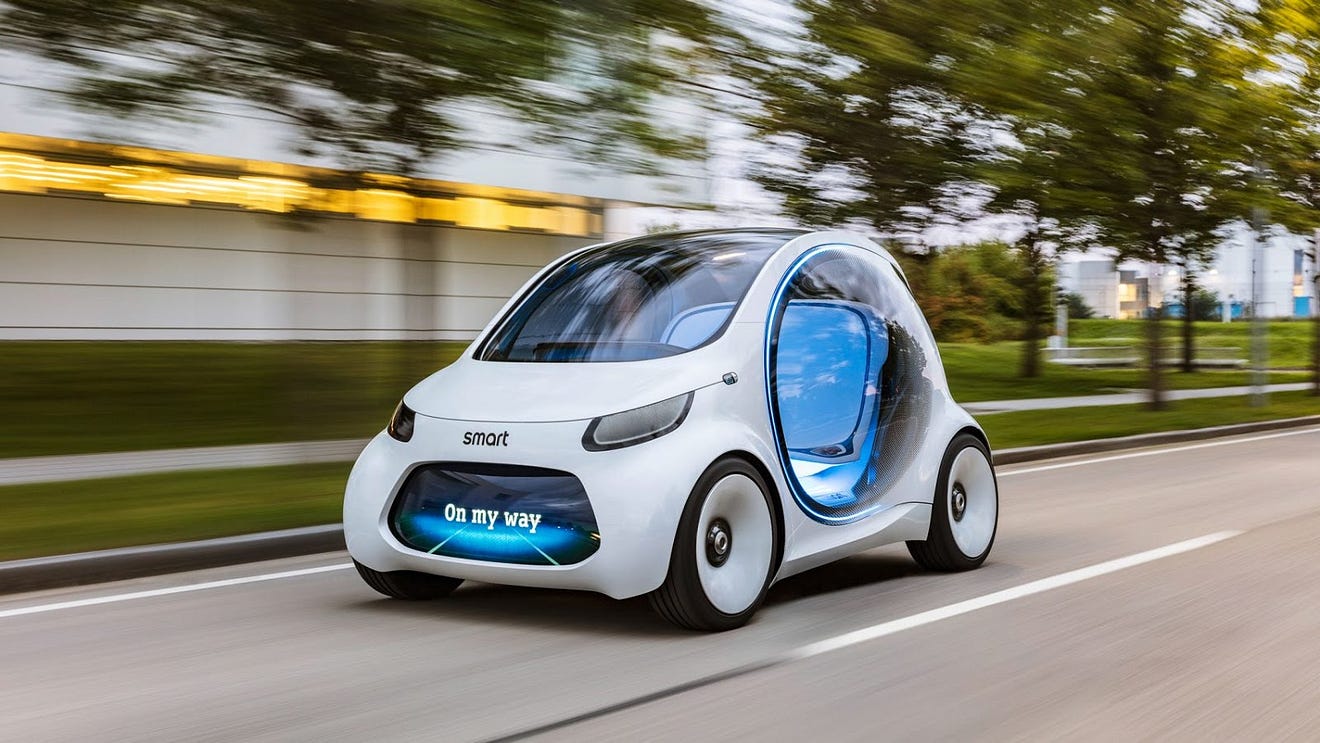
Introduction
Visualize this: your smart mattress alerts your coffee-maker when it feels you stirring in the morning, making sure your cuppa joe is at the perfect temperature when you pick it up. Your refrigerator has already notified the grocery store that you’re out of eggs. You look at your wearable tracker to estimate your calorie intake for the day while brushing your teeth — you decide to eat healthy, and use your phone to switch on your juicer.
All of these technological innovations fall under the umbrella of the Internet of Things, or IoT. IoT is built on the idea of extending network connectivity beyond standard devices such as your laptops and smartphones to any traditionally non-internet-enabled (or “dumb”) device.
Intel predicts that, by next year, there will be 200 billion of these connected objects or about 26 per human. While the number seems huge, consider that 96% of companies that have thus far invested in the IoT space have seen a positive return on their investment, which implies that this trend will only continue to grow.
Looking beyond the minor home improvements in the thought exercise above, transportation is arguably the sector where we will see the most profound transformation from connectivity. From optimizing navigation to safety to congestion to vehicle utilization, real-time latency-free data transfer will undoubtedly change the way we work and live.

IoT and the Transportation Sector
According to Allied Market Research, the global influx of IoT into the transportation sector was valued at $135.35 billion for 2016 and is estimated to touch $328.76 billion by 2023, a CAGR growth of 13.7% globally.
This rapid influx is owed to the investment dollars from key players such as AT&T, Alcatel-Lucent, IBM, Verizon, Cisco Systems, and General Electric, among others. In a recent press release, Ericsson announced new solutions that will enable service providers to address a larger part of the IoT market. API-provider Twilio also announced its focus on IoT applications at its Signal Conference last year, including its new SIM card capability and a developer program.
At a country level, governments around the world are starting to pilot IoT transportation initiatives. China, for example, is targeting 10% of all its vehicles to be fully autonomous by 2030. The city of Wuhu partnered with the Chinese search engine and AI giant, Baidu, to open a 2 km long autonomous vehicle testing zone in 2016. A driverless bus also runs along the route between an automobile plant and an R&D center owned by China’s largest exporter of passenger cars, Chery. Japan, too, wants to showcase its autonomous technology during the 2020 Summer Olympics in Tokyo.
The reduction in prices of powerful sensors and controllers, coupled with a demand for faster internet, makes the adoption of IoT for improving the efficiency of the transport sector inevitable.
Benefits for Consumers
Reduce auto collision and driving risk
Nearly 1.2 million people die in road crashes each year, about 3,287 deaths a day on average. Experts believe this number will be drastically cut when self-driving vehicles begin to replace human drivers. According to a studyconducted by the Rand organization, if autonomous vehicles are developed to be even 10 percent better than American drivers, they have the potential to save thousands of American drivers in its first decade, and over half a million lives in the next 30 years.
By equipping IoT-enabled cars with real-time driving, mapping, and video data, these smart vehicles will be able to ‘see’ blind turns and corners at a distance, identify pedestrians, cyclists, and any other road hazards well in advance, and make complicated but automatic judgment calculations and split-second decisions to maximize human safety.
Time savings from efficient routing and parking
I’ve spoken about traffic and routing above but, in addition, cars can make use of road sensors to find the closest parking spot. Apps such as AppyParking, available in 20 of the UK’s biggest cities, is already making a tremendous difference here. The use of the real-time availability display feature of this app reduced parking congestion and search distance by a staggering 22% and 30% during peak hours.

Benefits for Companies
App-based mobility services
Mobility is unquestionably a sector that is experience high growth and innovation, with companies like Uber and Lyft leading the charge in the US and many others in other countries. These are also the companies that are investing the most in IoT technologies that can further optimize the travel experience, with or without a human driver. At the very least, an autonomous vehicle fleet can provide up to 10x higher utilization rates, lowering the fundamental costs of the business.
Insurers can process and approve claims faster
Autonomous cars could transform the car insurance business. The availability of real-time data, feed, and reports of vehicular crashes can help companies resolve claims with considerably more accuracy and less controversy.
Benefits for Cities
Improve traffic flow
Beyond connected cars themselves, truly smart cities will be equipped with a complex network of road sensors. These sensors will communicate congestion and hazard data to other vehicles and to traffic lights, re-routing and load-balancing traffic throughout the city.
Platooning
IoT will enable the ability to scalably platoon vehicles, a concept where a set of driving automobiles are coupled together, electronically and sometimes mechanically, traveling at the same speed and maintaining an equal distance between them. Platooning improves traffic safety, fuel consumption, and emissions. According to a Mobility 2000 report, accidents could reduce by up to 70–90 percent on fully automated highway systems. The installation of collision avoidance systems is predicted to halve the number of loss of lives on U.S. roads by 2020.
Smart traffic lights
The traffic lights of the future will change dynamically mirroring traffic flow, enabling faster commutes by 26%, reducing vehicle wait time by 40%, and reducing emissions by 21%.
Smarter movement of public transport
And not all the benefits are for cars; city buses can dynamically observe the number of people at a stop and can increase speed and reroute accordingly.

IoT and 5G
At the core of much of IoT’s capabilities lie 5G. IHS Markit estimates that the automotive and transport ecosystem will account for 20% of total calculated 5G sales enablement by 2035. It’s 5G’s improvement in speed (10x 4G LTE) and latency (100x) that is necessary for last-minute connectivity between vehicles, roads, and other connected devices, an essential element for the IoT and autonomous driving.
5G uses millimeter waves to ensure that each device receives an exclusive data stream which is uninterrupted and instant. IoT vehicles essentially contain mini “cloud” systems, receiving and transmitting information amongst each other, i.e. vehicles ‘talk’ to each other and to sensors on every street corner, parking space, bus stop, and traffic signal systems constantly.
Additionally, 5G’s sophisticated use of signal processing algorithms will help in triangulating the exact source of signal emissions and allows the MIMO (multiple-input and multiple-output) base stations to plot the best transmission route for a coherent data stream, back in the air to each device, without interruptions. The use of high-definition maps, instead of the GPS, precisely localize the vehicle in its environment to single-digit centimeter-level accuracy.
(If this interests you, you should check out my last blog on how 5G is going to impact the world.)
Challenges
While the technology is exciting and futuristic, it comes with its own share of challenges. There are many key areas and existing regulatory frameworks which will need massive rehauling, new safeguards which will need to be introduced, and administrations which will need to be ready to deal with unforeseen challenges that such a disruptive technology will undoubtedly cause.
Adopting IoT is expensive
Let us be very clear here — adopting IoT in transportation would not be cheap. McKinsey estimates that the network-related capital costs could increase by 60 percent during infrastructure upgrade and the total cost of ownership could double. These infrastructure costs will be passed through to residents via higher taxes.
Enabling 5G in cities is a big undertaking
The installation of new MIMO substations, small cells in every street at short distances, and laying fiberoptic cables through the length and breadth of the city will require significant infrastructure upgrade and investment. Sensors in parking lots, signaling systems, bus stops etc. are a must for seamless connectivity between vehicles and objects and the safety of citizens.
Who will be responsible for liabilities
Self-driving cars are designed to reduce accidents and eliminate lives, but accidents are inevitable. In case of an accident, and in absence of a driver, who will be held accountable? The car manufacturer? The standby driver? If the accident is due to a failure in communications systems, will the city administration be responsible?
Plus, the public reaction to a fatal death caused by a machine will be one of outrage and disgust and vandalism. As the self-driving Uber accident in Arizona proved, the transition to IoT-enabled transportation won’t be easy.
Data security breaches
The entire automated transport system is data-driven, which means that the threat of cyber attacks is very real. Without proper precautions — including potentially the inclusion of blockchain or decentralized ledger technology — a malicious hacker could sell or exploit the your location data or even take over the operations of your car.

Conclusion
While any new technology is bound to have its own set of challenges which needs to be addressed, the benefits of an IoT enabled transportation system — increased public safety, traffic flow, fuel efficiency, and reduction of environmental impact — outweigh these challenges. It’ll be interesting to see how these technologies affect our cities, economies, and daily lives.
